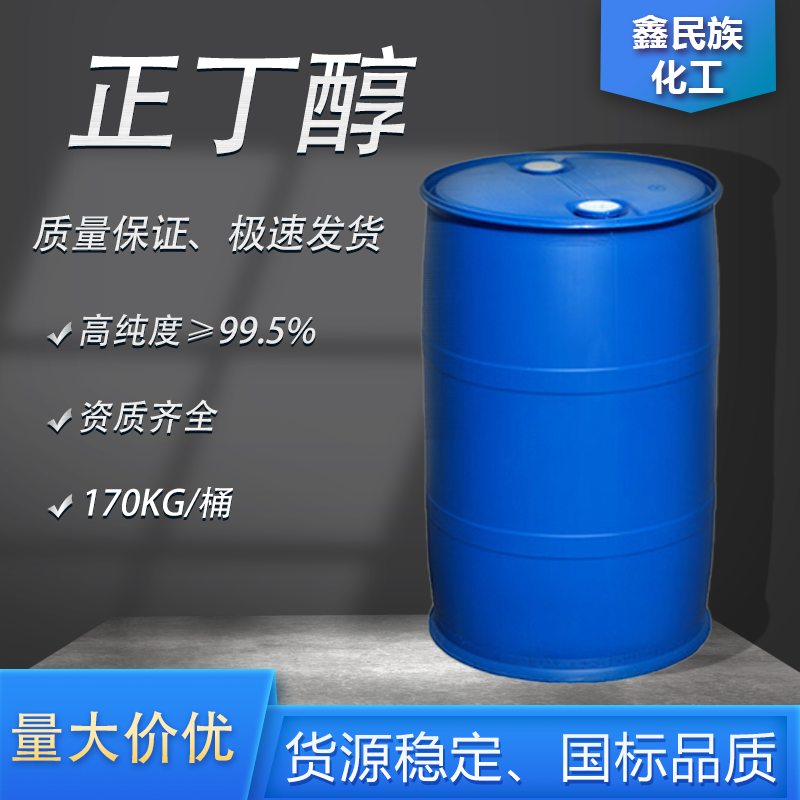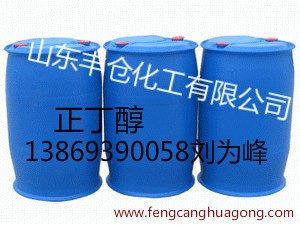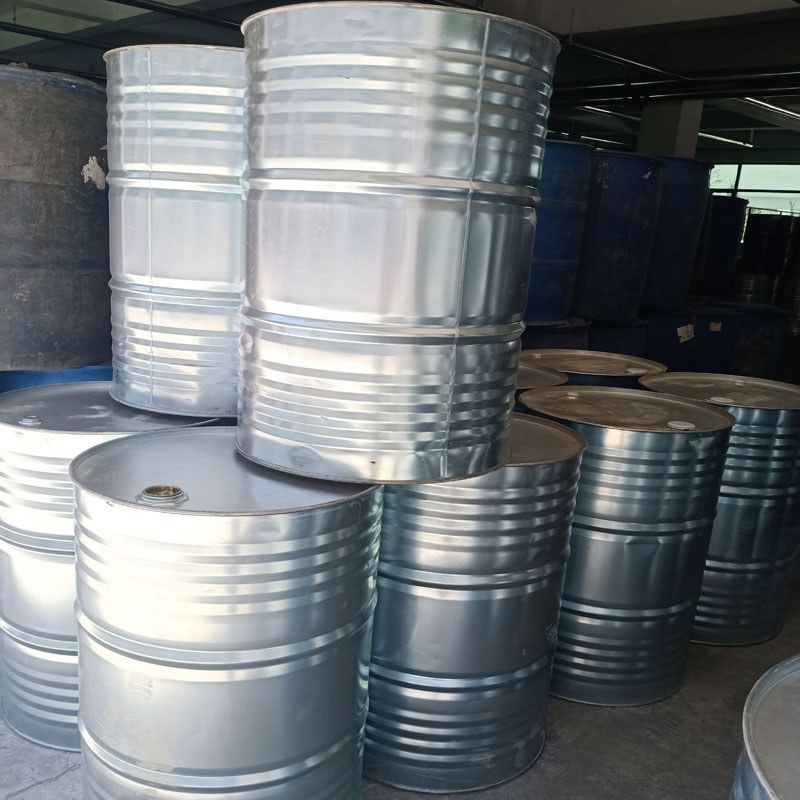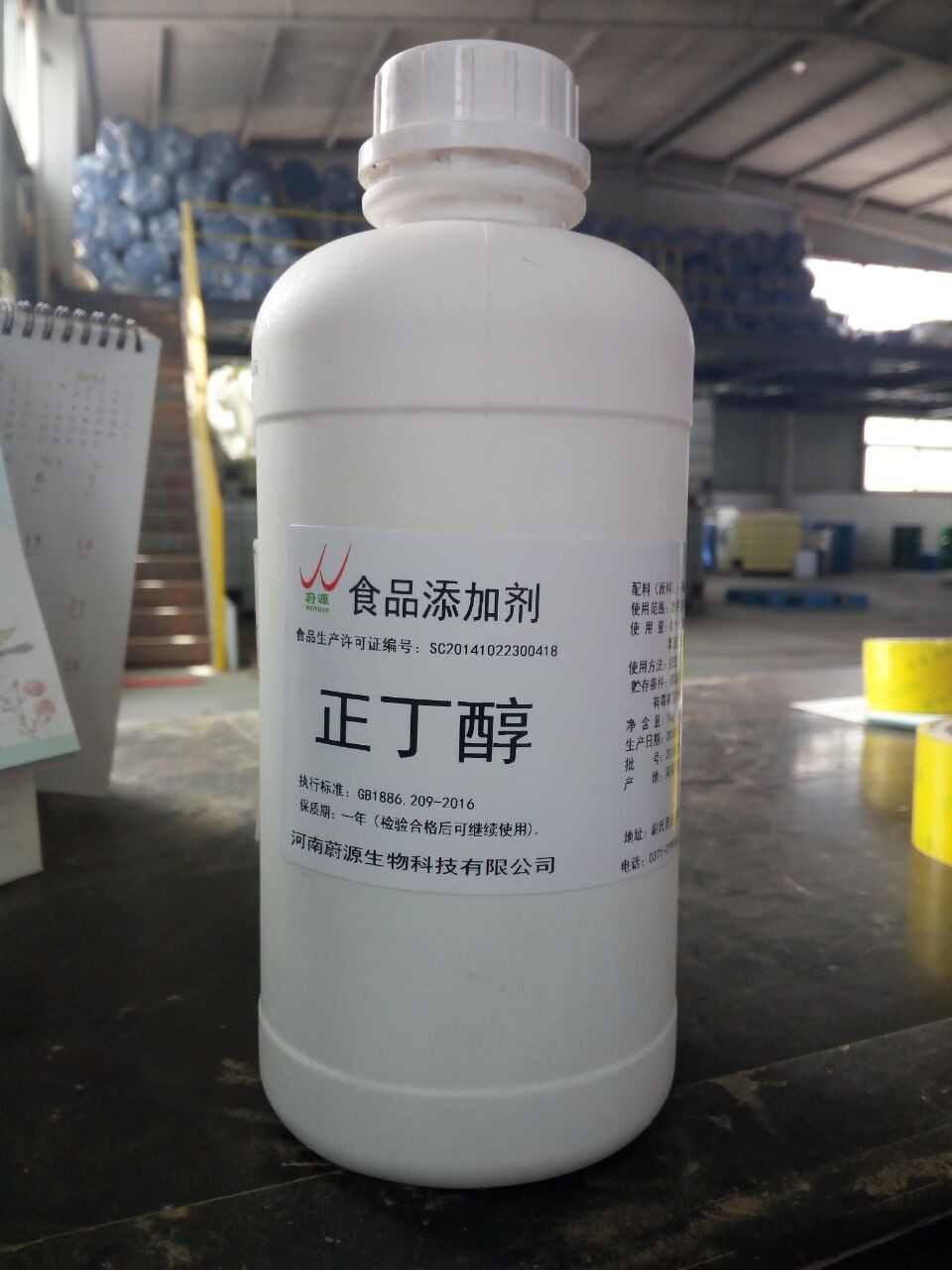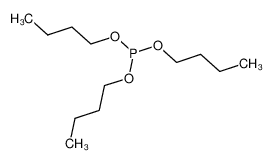| Product name | butan-1-ol |
|---|
| Product number | - |
|---|---|
| Other names | butan alcohol |
| Identified uses | For industry use only. Food additives -> Flavoring Agents |
|---|---|
| Uses advised against | no data available |
| Company | MOLBASE (Shanghai) Biotechnology Co., Ltd. |
|---|---|
| Address | Floor 4 & 5, Building 12, No. 1001 North Qinzhou Road, Xuhui District, Shanghai, China |
| Telephone | +86(21)64956998 |
| Fax | +86(21)54365166 |
| Emergency phone number | +86-400-6021-666 |
|---|---|
| Service hours | Monday to Friday, 9am-5pm (Standard time zone: UTC/GMT +8 hours). |
Flammable liquids, Category 3
Acute toxicity - Oral, Category 4
Skin irritation, Category 2
Serious eye damage, Category 1
Specific target organ toxicity – single exposure, Category 3
Specific target organ toxicity – single exposure, Category 3
2.2 GHS label elements, including precautionary statements| Pictogram(s) | 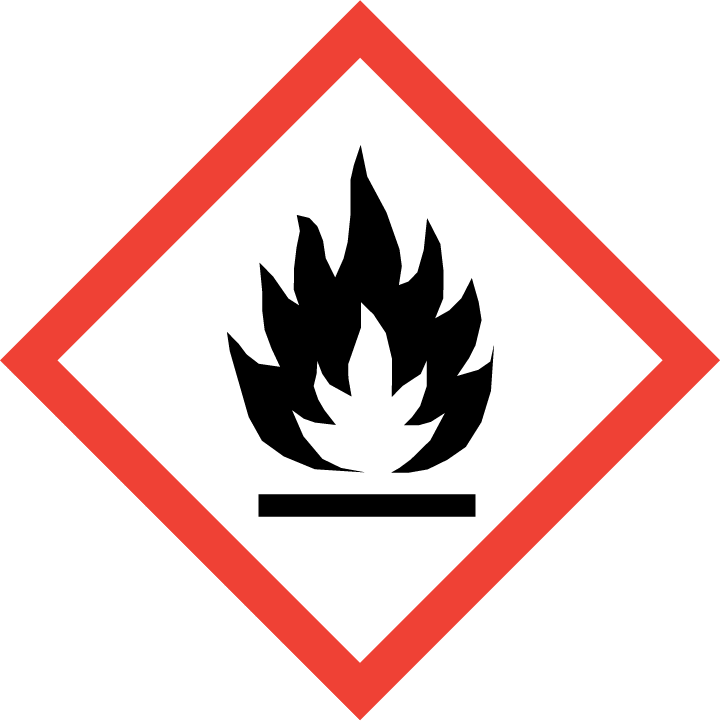 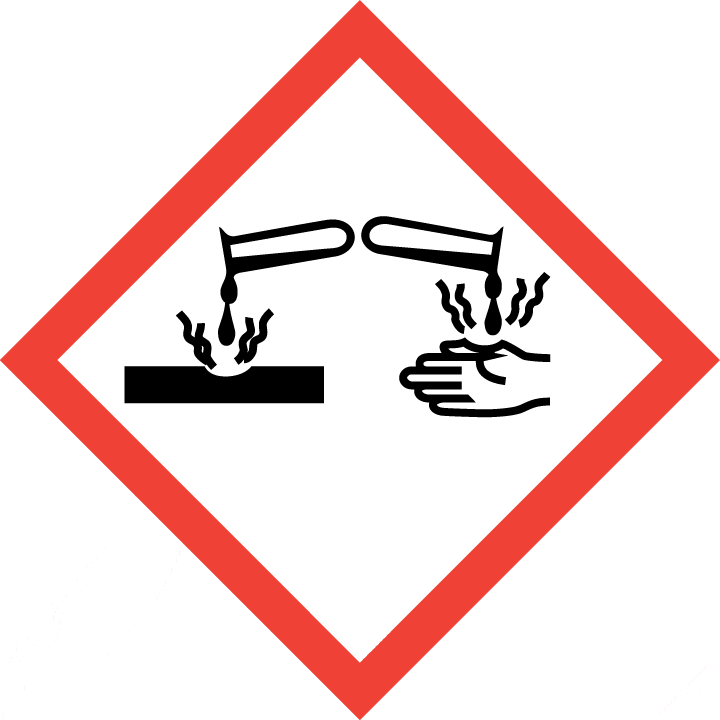  |
|---|---|
| Signal word | Danger |
| Hazard statement(s) | H226 Flammable liquid and vapour H302 Harmful if swallowed H315 Causes skin irritation H318 Causes serious eye damage H335 May cause respiratory irritation H336 May cause drowsiness or dizziness |
| Precautionary statement(s) | |
| Prevention | P210 Keep away from heat, hot surfaces, sparks, open flames and other ignition sources. No smoking. P233 Keep container tightly closed. P240 Ground and bond container and receiving equipment. P241 Use explosion-proof [electrical/ventilating/lighting/...] equipment. P242 Use non-sparking tools. P243 Take action to prevent static discharges. P280 Wear protective gloves/protective clothing/eye protection/face protection. P264 Wash ... thoroughly after handling. P270 Do not eat, drink or smoke when using this product. P261 Avoid breathing dust/fume/gas/mist/vapours/spray. P271 Use only outdoors or in a well-ventilated area. |
| Response | P303+P361+P353 IF ON SKIN (or hair): Take off immediately all contaminated clothing. Rinse skin with water [or shower]. P370+P378 In case of fire: Use ... to extinguish. P301+P312 IF SWALLOWED: Call a POISON CENTER/doctor/…if you feel unwell. P330 Rinse mouth. P302+P352 IF ON SKIN: Wash with plenty of water/... P321 Specific treatment (see ... on this label). P332+P313 If skin irritation occurs: Get medical advice/attention. P362+P364 Take off contaminated clothing and wash it before reuse. P305+P351+P338 IF IN EYES: Rinse cautiously with water for several minutes. Remove contact lenses, if present and easy to do. Continue rinsing. P310 Immediately call a POISON CENTER/doctor/… P304+P340 IF INHALED: Remove person to fresh air and keep comfortable for breathing. P312 Call a POISON CENTER/doctor/…if you feel unwell. |
| Storage | P403+P235 Store in a well-ventilated place. Keep cool. P403+P233 Store in a well-ventilated place. Keep container tightly closed. P405 Store locked up. |
| Disposal | P501 Dispose of contents/container to ... |
none
3.Composition/information on ingredients 3.1 Substances| Chemical name | Common names and synonyms | CAS number | EC number | Concentration |
|---|---|---|---|---|
| butan-1-ol | butan-1-ol | 71-36-3 | none | 100% |
Consult a physician. Show this safety data sheet to the doctor in attendance.
If inhaledFresh air, rest.
In case of skin contactRemove contaminated clothes. Rinse skin with plenty of water or shower.
In case of eye contactFirst rinse with plenty of water for several minutes (remove contact lenses if easily possible), then refer for medical attention.
If swallowedRinse mouth. Give one or two glasses of water to drink. Do NOT induce vomiting. Refer for medical attention .
4.2 Most important symptoms/effects, acute and delayedAnesthesia, nausea, headache, dizziness, irritation of respiratory passages. Mildly irritating to the skin and eyes. (USCG, 1999)
4.3 Indication of immediate medical attention and special treatment needed, if necessaryImmediate first aid: Ensure that adequate decontamination has been carried out. If patient is not breathing, start artificial respiration, preferably with a demand-valve resuscitator, bag-valve-mask device, or pocket mask, as trained. Perform CPR as necessary. Immediately flush contaminated eyes with gently flowing water. Do not induce vomiting. If vomiting occurs, lean patient forward or place on left side (head-down position, if possible) to maintain an open airway and prevent aspiration. Keep patient quiet and maintain normal body temperature. Obtain medical attention. /Higher alcohols (>3 carbons) and related compounds/
5.Fire-fighting measures 5.1 Extinguishing media Suitable extinguishing mediaSpecial hazards arising from the substance or mixture: carbon oxides...
5.2 Specific hazards arising from the chemicalExcerpt from ERG Guide 129 [Flammable Liquids (Water-Miscible / Noxious)]: HIGHLY FLAMMABLE: Will be easily ignited by heat, sparks or flames. Vapors may form explosive mixtures with air. Vapors may travel to source of ignition and flash back. Most vapors are heavier than air. They will spread along ground and collect in low or confined areas (sewers, basements, tanks). Vapor explosion hazard indoors, outdoors or in sewers. Those substances designated with a (P) may polymerize explosively when heated or involved in a fire. Runoff to sewer may create fire or explosion hazard. Containers may explode when heated. Many liquids are lighter than water. (ERG, 2016)
5.3 Special protective actions for fire-fightersWear self-contained breathing apparatus for firefighting if necessary.
6.Accidental release measures 6.1 Personal precautions, protective equipment and emergency proceduresUse personal protective equipment. Avoid dust formation. Avoid breathing vapours, mist or gas. Ensure adequate ventilation. Evacuate personnel to safe areas. Avoid breathing dust. For personal protection see section 8.
6.2 Environmental precautionsPersonal protection: filter respirator for organic gases and vapours adapted to the airborne concentration of the substance. Collect leaking and spilled liquid in sealable containers as far as possible. Absorb remaining liquid in sand or inert absorbent. Then store and dispose of according to local regulations. Wash away remainder with plenty of water.
6.3 Methods and materials for containment and cleaning upACCIDENTAL RELEASE MEASURES. Personal precautions, protective equipment and emergency procedures: Use personal protective equipment. Avoid breathing vapours, mist or gas. Ensure adequate ventilation. Remove all sources of ignition. Evacuate personnel to safe areas. Beware of vapours accumulating to form explosive concentrations. Vapours can accumulate in low areas.; Environmental precautions: Prevent further leakage or spillage if safe to do so. Do not let product enter drains.; Methods and materials for containment and cleaning up: Contain spillage, and then collect with an electrically protected vacuum cleaner or by wet-brushing and place in container for disposal according to local regulations.
7.Handling and storage 7.1 Precautions for safe handlingAvoid contact with skin and eyes. Avoid formation of dust and aerosols. Avoid exposure - obtain special instructions before use.Provide appropriate exhaust ventilation at places where dust is formed. For precautions see section 2.2.
7.2 Conditions for safe storage, including any incompatibilitiesFireproof. Separated from strong oxidants and aluminium.
8.Exposure controls/personal protection 8.1 Control parameters Occupational Exposure limit valuesRecommended Exposure Limit: 15 Minute Ceiling value: 50 ppm (150 mg/cu m) [skin].
Biological limit valuesno data available
8.2 Appropriate engineering controlsHandle in accordance with good industrial hygiene and safety practice. Wash hands before breaks and at the end of workday.
8.3 Individual protection measures, such as personal protective equipment (PPE) Eye/face protectionSafety glasses with side-shields conforming to EN166. Use equipment for eye protection tested and approved under appropriate government standards such as NIOSH (US) or EN 166(EU).
Skin protectionWear impervious clothing. The type of protective equipment must be selected according to the concentration and amount of the dangerous substance at the specific workplace. Handle with gloves. Gloves must be inspected prior to use. Use proper glove removal technique(without touching glove's outer surface) to avoid skin contact with this product. Dispose of contaminated gloves after use in accordance with applicable laws and good laboratory practices. Wash and dry hands. The selected protective gloves have to satisfy the specifications of EU Directive 89/686/EEC and the standard EN 374 derived from it.
Respiratory protectionWear dust mask when handling large quantities.
Thermal hazardsno data available
9.Physical and chemical properties| Physical state | colourless liquid |
|---|---|
| Colour | Colorless liquid |
| Odour | HARSH FUSEL ODOR WITH BANANA |
| Melting point/ freezing point | 263°C(lit.) |
| Boiling point or initial boiling point and boiling range | 116-118°C(lit.) |
| Flammability | Class IC Flammable Liquid: Fl.P. at or above 22.78°C and below 37.78°C.Flammable. |
| Lower and upper explosion limit / flammability limit | Lower flammable limit: 1.4% by volume; Upper flammable limit: 11.2% by volume |
| Flash point | 35°C |
| Auto-ignition temperature | 342.78°C |
| Decomposition temperature | no data available |
| pH | no data available |
| Kinematic viscosity | 36.1 cP at -50.9°C; 5.186 cP at 0°C; 2.544 cP at 25°C; 0.533 cP at 100°C |
| Solubility | In water:80 g/L (20 ºC) |
| Partition coefficient n-octanol/water (log value) | no data available |
| Vapour pressure | 15.51 mm Hg (USCG, 1999) |
| Density and/or relative density | 0.81g/mLat 25°C(lit.) |
| Relative vapour density | 2.55 (vs air) |
| Particle characteristics | no data available |
no data available
10.2 Chemical stabilityStable under recommended storage conditions.
10.3 Possibility of hazardous reactionsFlammable liquid. Moderately explosive when exposed to flame.N-BUTYL ALCOHOL attacks plastics. [Handling Chemicals Safely 1980. p. 236]. Mixtures with concentrated sulfuric acid and strong hydrogen peroxide can cause explosions. May form explosive butyl hypochlorite by reacting with hypochlorous acid. May form butyl explosive butyl hypochlorite with chlorine.
10.4 Conditions to avoidno data available
10.5 Incompatible materialsButanol, used as a solvent in an autoclave preparation at 100°C, severely attacked the aluminum gasket, liberating hydrogen which caused a sharp rise in pressure. Other alcohols would behave similarly ... .
10.6 Hazardous decomposition productsWhen heated to decomp it emits acrid smoke and fumes.
11.Toxicological information Acute toxicity- Oral: LD50 rats 0.79 to 4.36 g/kg (single oral dose)
- Inhalation: LC50 Rat inhalation 8000 ppm/4 hr
- Dermal: no data available
no data available
Serious eye damage/irritationno data available
Respiratory or skin sensitizationno data available
Germ cell mutagenicityno data available
CarcinogenicityCLASSIFICATION: D; not classifiable as to human carcinogenicity. BASIS FOR CLASSIFICATION: Based on no human and no animal cancer data. HUMAN CARCINOGENICITY DATA: None. ANIMAL CARCINOGENICITY DATA: None.
Reproductive toxicityno data available
STOT-single exposureno data available
STOT-repeated exposureno data available
Aspiration hazardno data available
12.Ecological information 12.1 Toxicity- Toxicity to fish: LC50; Species: Pimephales promelas (fathead minnow) /4-8 wk juvenile, length 1.1-3.1 cm, Conditions: freshwater, static, 18-22°C, dissolved oxygen >4.0 mg/L/; Concentration: 1940 mg/L for 24, 48, 72, 96 hr /formulation
- Toxicity to daphnia and other aquatic invertebrates: EC50; Species: Daphnia magna (water flea); Conditions: /freshwater, static/; Concentration: 2337 mg/L for 24 hr; Effect: lost ability to swim
- Toxicity to algae: EC50; Species: Enteromorpha intestinalis (Green Algae); Conditions: saltwater, static, 15°C; Concentration: 135 mM for 24 hr; Effect: physiology, decreased neutral red uptake /95-99.8% purity
- Toxicity to microorganisms: no data available
AEROBIC: n-Butyl alcohol biodegrades rapidly in screening tests using a sewage or activated sludge inoculum and is considered readily biodegradable(1). n-Butyl alcohol reached 66% of its theoretical BOD in a sewage sludge during a 5 day incubation period(2) and 33% of its theoretical BOD using an inoculum from polluted surface water(3). The first-order rate constant for the degradation of n-butyl alcohol in soils was reported as 2X10-6 sec-1(4); this corresponds to a half-life of approximately 4 days(SRC). The first-order biodegradation rate constant of n-butyl alcohol in an activated sludge inoculum was reported as 9.59X10-3 per hour(5); this corresponds to a half-life of about 3 days(SRC). The biodegradation half-life of n-butyl alcohol in a sub-surface soil from Blacksburg, VA was approximately 7 days(6). The biodegradation half-life of n-butyl alcohol in a basic sandy silt loam from Texas was reported as 1 day and the half-life of n-butyl alcohol in an acidic sandy loam from Mississippi was reported as 8.5 days(7). A 20 day BOD (Biochemical Oxygen Demand) test was conducted using unacclimated settled domestic wastewater as the microbial seed (3 mL/BOD bottle)(1); the results showed a BOD5 of 68% ThOD (percent of theoretical oxygen demand), a BOD10 of 87% ThOD, a BOD15 of 92% ThOD, and a BOD20 of 92% ThOD(1). n-Butyl alcohol, present at 100 mg/L, reached >60% of its theoretical BOD in 4 weeks using an activated sludge inoculum at 30 mg/L in the Japanese MITI test(8).
12.3 Bioaccumulative potentialAn estimated BCF of 3 was calculated in fish for n-butyl alcohol(SRC), using a log Kow of 0.88(1) and a regression-derived equation(2). According to a classification scheme(3), this BCF suggests the potential for bioconcentration in aquatic organisms is low(SRC).
12.4 Mobility in soilThe measured Koc of n-butyl alcohol is reported as 3.2(1). According to a classification scheme(2), this Koc value suggests that n-butyl alcohol is expected to have very high mobility in soil(SRC).
12.5 Other adverse effectsno data available
13.Disposal considerations 13.1 Disposal methods ProductThe material can be disposed of by removal to a licensed chemical destruction plant or by controlled incineration with flue gas scrubbing. Do not contaminate water, foodstuffs, feed or seed by storage or disposal. Do not discharge to sewer systems.
Contaminated packagingContainers can be triply rinsed (or equivalent) and offered for recycling or reconditioning. Alternatively, the packaging can be punctured to make it unusable for other purposes and then be disposed of in a sanitary landfill. Controlled incineration with flue gas scrubbing is possible for combustible packaging materials.
14.Transport information 14.1 UN Number| ADR/RID: UN1120 | IMDG: UN1120 | IATA: UN1120 |
| ADR/RID: BUTANOLS |
| IMDG: BUTANOLS |
| IATA: BUTANOLS |
| ADR/RID: 3 | IMDG: 3 | IATA: 3 |
| ADR/RID: III | IMDG: III | IATA: III |
| ADR/RID: no | IMDG: no | IATA: no |
no data available
14.7 Transport in bulk according to Annex II of MARPOL 73/78 and the IBC Codeno data available
15.Regulatory information 15.1 Safety, health and environmental regulations specific for the product in question| Chemical name | Common names and synonyms | CAS number | EC number |
|---|---|---|---|
| butan-1-ol | butan-1-ol | 71-36-3 | none |
| European Inventory of Existing Commercial Chemical Substances (EINECS) | Listed. | ||
| EC Inventory | Listed. | ||
| United States Toxic Substances Control Act (TSCA) Inventory | Listed. | ||
| China Catalog of Hazardous chemicals 2015 | Listed. | ||
| New Zealand Inventory of Chemicals (NZIoC) | Listed. | ||
| Philippines Inventory of Chemicals and Chemical Substances (PICCS) | Listed. | ||
| Vietnam National Chemical Inventory | Listed. | ||
| Chinese Chemical Inventory of Existing Chemical Substances (China IECSC) | Listed. | ||
| Creation Date | Aug 12, 2017 |
|---|---|
| Revision Date | Aug 12, 2017 |
- CAS: Chemical Abstracts Service
- ADR: European Agreement concerning the International Carriage of Dangerous Goods by Road
- RID: Regulation concerning the International Carriage of Dangerous Goods by Rail
- IMDG: International Maritime Dangerous Goods
- IATA: International Air Transportation Association
- TWA: Time Weighted Average
- STEL: Short term exposure limit
- LC50: Lethal Concentration 50%
- LD50: Lethal Dose 50%
- EC50: Effective Concentration 50%
- IPCS - The International Chemical Safety Cards (ICSC), website: http://www.ilo.org/dyn/icsc/showcard.home
- HSDB - Hazardous Substances Data Bank, website: https://toxnet.nlm.nih.gov/newtoxnet/hsdb.htm
- IARC - International Agency for Research on Cancer, website: http://www.iarc.fr/
- eChemPortal - The Global Portal to Information on Chemical Substances by OECD, website: http://www.echemportal.org/echemportal/index?pageID=0&request_locale=en
- CAMEO Chemicals, website: http://cameochemicals.noaa.gov/search/simple
- ChemIDplus, website: http://chem.sis.nlm.nih.gov/chemidplus/chemidlite.jsp
- ERG - Emergency Response Guidebook by U.S. Department of Transportation, website: http://www.phmsa.dot.gov/hazmat/library/erg
- Germany GESTIS-database on hazard substance, website: http://www.dguv.de/ifa/gestis/gestis-stoffdatenbank/index-2.jsp
- ECHA - European Chemicals Agency, website: https://echa.europa.eu/






